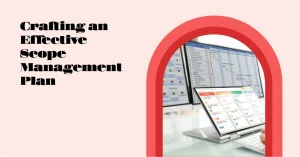I Introduction
As a project manager, I’ve faced my fair share of challenges when it comes to keeping projects on track and within budget. One thing I’ve learned is that understanding the different types of costs involved in a project is absolutely essential to effective project management. If you’re like me, you know that every penny counts and that a clear grasp of the financial side of things can be the difference between a successful project and a costly disaster.
In this blog post, we’ll dive into the three pillars of costing—direct costs, indirect costs, and overhead costs—and explore how they impact project management. By the end of this post, you’ll have a solid understanding of these costs, how they’re calculated, and how you can better manage them to ensure your projects run smoothly and stay within budget.
So, whether you’re a seasoned project manager or just starting out in the field, let’s embark on this journey together to unravel the mysteries of the three pillars of costing and learn how to effectively manage them for project success.
II Direct Costs
a. Definition and examples
In my experience as a project manager, I’ve found that understanding direct costs is crucial for effective budgeting and resource allocation. Direct costs are those that can be specifically traced to a particular project or activity. These costs are easily identifiable and directly linked to your project’s production and completion.
Some common examples of direct costs include:
- Labor costs for employees working solely on the project
- Materials and supplies purchased explicitly for the project
- Equipment rental fees for machinery used exclusively in the project
b. How direct costs impact project management
i. Budgeting
When I create a project budget, I pay special attention to direct costs, as they make up a significant portion of the project’s overall expenses. Accurately estimating direct costs is critical for developing a realistic budget that won’t leave you scrambling for funds halfway through the project.
ii. Resource allocation
Direct costs also play a vital role in resource allocation. As a project manager, you’ll need to ensure that your team has the necessary resources to complete the project on time and within budget. This means carefully monitoring direct costs, such as labor and materials, to make sure you’re allocating resources efficiently and effectively.
c. Calculating and managing direct costs
i. Estimation techniques
When it comes to estimating direct costs, I’ve found that using a combination of techniques can be helpful. These might include:
- Historical data: Reviewing the costs of similar projects in the past can give you a good starting point for your estimates.
- Expert judgment: Consult with experts in your team or industry to get their input on potential costs.
- Vendor quotes: Reach out to suppliers and vendors for price quotes on materials, equipment rentals, or subcontractor services.
ii. Monitoring and controlling costs
As the project progresses, it’s essential to keep a close eye on direct costs to ensure you’re staying within budget. Some strategies I’ve found helpful include:
- Regularly reviewing cost reports to track actual spending against budgeted amounts
- Identifying and addressing cost variances promptly
- Implementing cost control measures, such as renegotiating contracts or finding more cost-effective suppliers
By understanding, calculating, and managing direct costs, you’ll be better equipped to keep your projects on track and within budget, ultimately setting you up for project success.
III Indirect Costs
a. Definition and examples
While direct costs are pretty straightforward, indirect costs can be a bit trickier to navigate. Indirect costs are those that cannot be traced directly to a specific project or activity, but still contribute to the overall expenses of running a project. In my experience, these costs are often overlooked or underestimated, which can lead to unpleasant surprises later on.
Some common examples of indirect costs include:
- Utilities and office supplies that support multiple projects
- Salaries of support staff who work on several projects concurrently
- Depreciation of equipment used across multiple projects
b. How indirect costs impact project management
i. Project scheduling
Indirect costs can have a significant impact on project scheduling. For example, if your project shares resources with other projects, you may need to adjust your schedule to accommodate their availability. I’ve found that being aware of indirect costs and their implications can help you create more realistic and flexible schedules, reducing the risk of delays and conflicts.
ii. Cost-benefit analysis
When determining the viability of a project, it’s essential to consider both direct and indirect costs. Performing a cost-benefit analysis can help you weigh the total costs against the potential benefits of a project, ensuring that your decision-making is well-informed and financially sound.
c. Calculating and managing indirect costs
i. Allocation methods
To account for indirect costs in your project budget, you’ll need to allocate them appropriately. There are several methods you can use, such as:
- Direct labor hours: Allocate indirect costs based on the proportion of direct labor hours each project consumes.
- Direct labor costs: Allocate indirect costs based on the proportion of direct labor costs each project incurs.
- Machine hours: Allocate indirect costs based on the proportion of machine hours each project uses.
Choose the method that best reflects the distribution of indirect costs across your projects.
ii. Monitoring and controlling costs
Managing indirect costs can be challenging, as they’re not always easy to track. However, I’ve found that the following strategies can help you keep them under control:
- Regularly review and update your allocation method to ensure it accurately reflects the distribution of indirect costs
- Continuously monitor indirect costs, looking for patterns or trends that might indicate inefficiencies
- Implement cost-saving measures, such as consolidating support functions or optimizing resource utilization
By understanding and managing indirect costs, you’ll be better prepared to handle the financial complexities of project management and increase your chances of project success.
IV Overhead Costs
a. Definition and examples
In addition to direct and indirect costs, there’s another category of costs that often comes into play in project management: overhead costs. Overhead costs are the ongoing expenses that keep your organization running, regardless of specific projects or activities. They’re not directly tied to project production but still impact your overall project budget.
Some common examples of overhead costs include:
- Rent or mortgage payments for office space
- Insurance premiums and taxes
- Salaries of executive and administrative staff
b. How overhead costs impact project management
i. Organizational structure
Overhead costs can influence the way you structure your organization and its projects. For instance, a high overhead cost may lead you to reevaluate your office space or consider implementing remote work policies to reduce expenses. Being aware of overhead costs can help you make informed decisions about your organization’s structure and the way you manage projects.
ii. Profitability analysis
When assessing the profitability of a project, it’s essential to consider overhead costs. By allocating a portion of overhead costs to each project, you can more accurately assess its overall profitability and make better decisions about which projects to pursue.
c. Calculating and managing overhead costs
i. Cost allocation methods
To allocate overhead costs to your projects, you can use similar methods as those for indirect costs. These might include:
- Direct labor hours: Allocate overhead costs based on the proportion of direct labor hours each project consumes.
- Direct labor costs: Allocate overhead costs based on the proportion of direct labor costs each project incurs.
- Machine hours: Allocate overhead costs based on the proportion of machine hours each project uses.
Choose the method that best represents the distribution of overhead costs across your projects.
ii. Overhead cost reduction strategies
Managing overhead costs is crucial for maintaining your organization’s financial health. Here are some strategies I’ve found effective in reducing overhead costs:
- Regularly review and analyze overhead expenses to identify areas of potential savings
- Implement cost-saving measures, such as renegotiating lease agreements or consolidating office space
- Optimize resource utilization by investing in technology and automation where appropriate
By understanding and managing overhead costs, you can make more informed decisions about your organization’s structure and project management approach, ultimately contributing to your project’s success.
V The Interaction of the Three Pillars of Costing
a. How direct, indirect, and overhead costs are interconnected
Throughout my project management journey, I’ve discovered that a comprehensive understanding of all three pillars of costing—direct, indirect, and overhead costs—is essential for success. These cost categories are interconnected, and a change in one can impact the others.
For instance, if you decide to hire additional staff for a project (a direct cost), you may also need to provide them with office space, supplies, and support (indirect and overhead costs). Likewise, if you implement cost-saving measures in your organization’s overhead, it may indirectly affect your project budgets and resource allocations.
b. Balancing cost categories for optimal project management
As a project manager, you need to strike a delicate balance between managing direct, indirect, and overhead costs to achieve optimal project outcomes. Here are some tips I’ve picked up along the way to help you find this balance:
- Prioritize cost management: Regularly review and update your project budgets, ensuring all cost categories are accounted for and managed effectively.
- Communicate with stakeholders: Keep stakeholders informed about the cost implications of project decisions, making sure they understand the trade-offs involved.
- Foster a cost-conscious culture: Encourage your team to be mindful of costs in all aspects of the project, from resource utilization to decision-making.
By keeping the interconnected nature of the three pillars of costing in mind and carefully balancing their management, you can set your projects up for success and drive more effective and efficient project outcomes.
VI Conclusion
As we’ve explored the world of the three pillars of costing together, I hope you’ve gained valuable insights into the importance of understanding and managing direct, indirect, and overhead costs in project management. With this knowledge, you’ll be better equipped to create realistic budgets, allocate resources efficiently, and make informed decisions about your projects and organization.
To recap, here are some key takeaways from our journey:
- Direct costs are specifically tied to project production and completion, while indirect costs support multiple projects and activities, and overhead costs keep your organization running.
- Managing these cost categories effectively is crucial for project success, as they impact budgeting, resource allocation, scheduling, cost-benefit analysis, and profitability.
- Regularly reviewing and updating your cost management strategies can help you identify potential savings and optimize resource utilization.
As you apply these principles to your project management strategies, you’ll be well on your way to delivering successful projects that stay within budget and create value for your organization. I wish you the best of luck on your project management journey, and I hope our exploration of the three pillars of costing has been both informative and inspiring.
To find out how Artificial Intelligence is changing the Project Management landscape, you have enjoy reading this article https://www.shaunstoltz.com/did-artificial-intelligence-just-change-everything-about-project-management/
Find out more about Shaun Stoltz https://www.shaunstoltz.com/about/
This post was written by an AI and reviewed/edited by a human.



